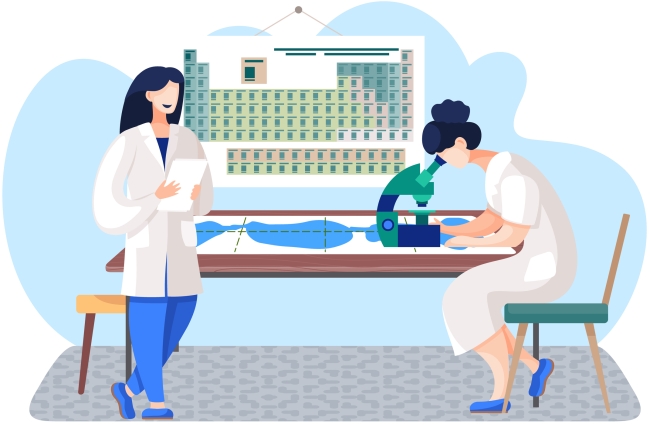You have /5 articles left.
Sign up for a free account or log in.

Dmytro Robu/iStock/Getty Images Plus
Women remain underrepresented in academe, despite existing diversity efforts and significant investments. Traditionally, members of the academy have been evaluated based on publications, recommendation letters and teaching evaluations. While these tools seem objective, repeated studies show they are biased. To counter this, members of the academy must alter the culture that gives rise to and reinforces identity-based bias. The path forward is not to decrease reliance on performance metrics, but to change ingrained views and add new, intentional behaviors that will reduce their bias.
Underrepresentation of women is particularly pronounced and pernicious in STEM fields. In academe, 28 percent of STEM professors and associate professors in the United States are women, despite women receiving 40 percent of STEM Ph.D.s for the past 10 to 15 years. Men in STEM earn more and receive more opportunities for advancement and awards. They are also more likely to stay in academe than women. These gaps cannot be accounted for by differences in education or career attainment, family responsibilities, or work effort.
Admittedly, there is a gap in publication rates between women and men. In part, that may be because women are often saddled with more teaching, mentoring and service work and more child- and elder-care. A recent study in Nature shows that women’s contributions are also less likely to be recognized and valued. Women have to publish more than men to be perceived as having the same level of achievement. Once published, women are also cited less than men. Even women in the National Academy of Sciences aren’t free from citation bias. These and other biases create a steeper slope for women to climb.
I have run two academic STEM research institutions, each with 25-plus faculty and more than 200 postdocs, graduate students and other researchers. Although I haven’t led a research laboratory or gone up for tenure, I have served on graduate admissions and faculty hiring committees, negotiated faculty start-up packages, prepared award nominations and tenure packages, and advocated for better pay and benefits for postdocs and graduate students. I also have my own stories of gender-based discrimination in academe, as recently as this past month.
The underrepresentation and undervaluing of women academics have real and measurable consequences for society. Homogenized echo chambers reinforce bias. In research fields with the fewest women, researchers are more likely to agree with the statement “Men are often more suited than women to do high-level work in [my discipline].”
This view restricts progress and the positive impacts of research. A study of 1.2 million Ph.D.s showed that women and underrepresented minorities are more likely to introduce novel concepts and innovations, but they are not as accepted as those from white men.
Established faculty members and administrative leaders within academe hold several keys to addressing underrepresentation. Faculty should purposefully assess whether they include, recognize and welcome women and their voices—and then take steps to correct the well-documented tendency to undervalue our work. Here are just a few suggestions.
- Ask yourself: Are your recommendation letters equitable? Are letters for women shorter? Do you use different adjectives? Do you focus on relevant professional details or pepper in comments on likability? How could you adjust your letters to be influenced less by gender?
- Use the Gender Balance Assessment Tool to estimate what percentage of authors you cite are women and ask if you can cite more women.
- Collaborate and publish with women and make your criteria for authorship decisions transparent.
- Invite women to speak to your community and at conferences. Ask them to join you or take your place at events to meet important colleagues. Hold events when parents and caregivers can attend.
- Make a point to take questions from female audience members at seminars and conferences.
- Keep formal and informal professional settings welcoming, inclusive and free from microaggressions and harassment.
For their part, administrative leaders should change the processes. If you are such a leader, you should:
- Train faculty for the challenging job of evaluating others for hiring and promotion, including on underlying biases in the data they will review and on how their own unconscious bias may skew evaluations.
- Encourage and help committee members to establish evaluation criteria, rubrics and strategies to reduce bias in reference letters.
- Avoid selecting candidates based on how well they know academe and its secrets and tell applicants clearly what you want to know.
- Distribute teaching, mentoring and service equitably. Ensure women are equally considered for high-value positions and that they are paid equally for their contributions and accomplishments.
- Evaluate your faculty for bias in whom they publish with, cite and invite to speak to your community.
Gatekeepers outside academe also have significant roles. Organizations that award prestigious fellowships and prizes should avoid limited competitions. Funders should follow the Wellcome Trust, the Gates Foundation and the National Science Foundation and analyze their organization and its practices. Publishers should include more women as journal editors and reduce bias that favors men and the small elite group of highly cited “status” labs, through double-anonymized reviews.
We need to acknowledge the impact that privilege for some and bias against the rest has on our community, research and society. We need to act now, because diverse teams yield more impactful outcomes, which we urgently need to address pressing global crises. Plenty of more-than-qualified women are ready now to make the next big breakthrough and create a culture that welcomes and values all.




